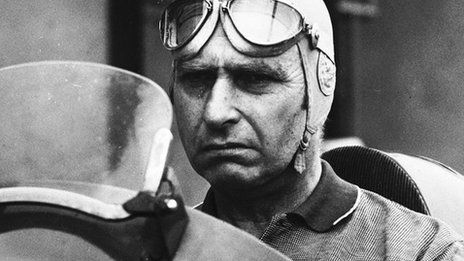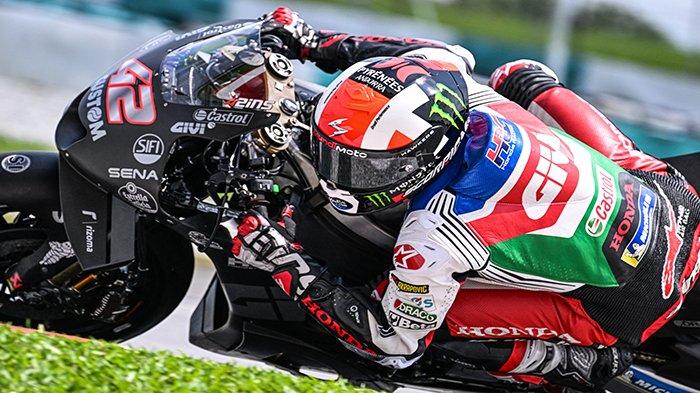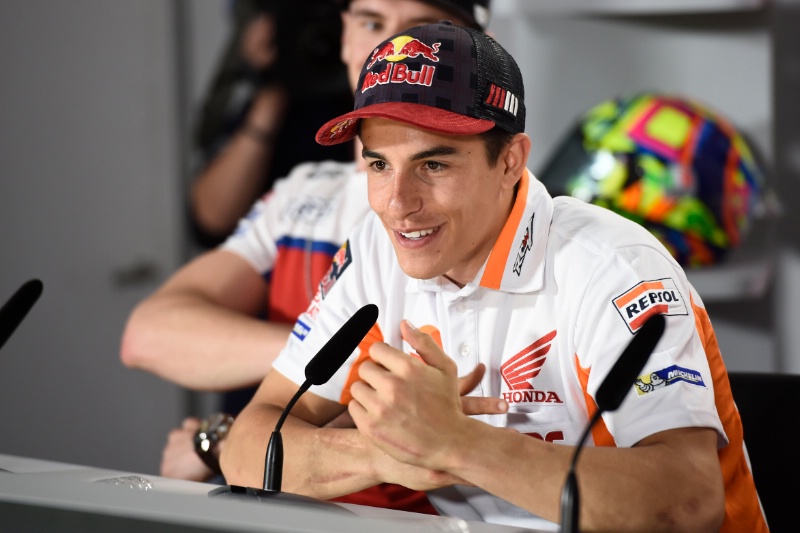Beyond 40: Examining The Careers Of F1's Greatest Drivers

Table of Contents
This article will explore the physical and mental challenges faced by drivers aging in F1, focusing on the strategies employed to maintain competitiveness. We will analyze the careers of several iconic drivers who successfully navigated this period, identifying common threads that contributed to their longevity and success. Finally, we will consider the future of F1 and the potential for even older drivers to compete effectively in the years to come.
The Physical and Mental Demands of F1 Racing After 40
The physical demands of Formula 1 racing are immense. Drivers endure extreme g-forces, requiring exceptional stamina, lightning-fast reflexes, and impeccable hand-eye coordination. As drivers age, maintaining peak physical condition becomes even more challenging.
Maintaining Peak Physical Condition
Age-related physical decline affects various aspects of a driver's performance. Reaction times can slow, muscle strength can diminish, and endurance can decrease. However, modern advancements in driver fitness and training help mitigate these effects.
- Rigorous Training Regimes: Elite F1 drivers engage in intense physical training programs, focusing on cardiovascular fitness, strength training, and flexibility. This includes activities like running, cycling, swimming, and specific exercises to improve neck strength and reaction time.
- Technological Advancements: Data-driven training methods, wearable technology, and personalized fitness plans help drivers monitor their performance, identify areas for improvement, and optimize their training programs.
- Nutrition and Recovery: A meticulously planned diet, focusing on nutrient-rich foods and proper hydration, plays a vital role in maintaining peak physical condition and aiding recovery from intense physical exertion.
The Mental Game
Beyond the physical demands, the mental aspect of F1 racing is equally crucial. Strategic thinking, decision-making under pressure, and unwavering mental fortitude are essential for success. Experience plays a key role in navigating complex race situations and adapting to unforeseen circumstances.
- Mental Strength and Resilience: Drivers like Alain Prost were renowned for their mental toughness and ability to manage pressure. Their experience allowed them to maintain focus and composure even in high-stakes scenarios.
- Race Strategy and Adaptability: Older drivers often possess a deep understanding of race strategy, track conditions, and competitor behavior. This accumulated knowledge allows them to make informed decisions and adapt to changing race dynamics.
- Team Dynamics and Leadership: Experienced drivers often serve as mentors and leaders within their teams, contributing valuable insight and fostering a positive team environment.
Case Studies: Drivers Who Excelled Beyond 40
Several legendary drivers have proven that exceptional performance in F1 isn't limited to youth. Analyzing their careers reveals valuable insights into their strategies and the factors that contributed to their success.
Niki Lauda: A Legend's Resilience
Niki Lauda's career is a testament to both exceptional talent and unwavering resilience. After a near-fatal crash in 1976, he returned to racing and continued to achieve significant victories. Even in his later years, his strategic acumen and racecraft remained formidable.
- Key Statistics: Lauda secured his final Grand Prix win at age 34, but continued to compete at a high level for several years after.
- Significant Achievements After 40: While he didn't win races after the age of 40, his experience and strategic prowess were invaluable to his teams.
- Anecdotes: His comeback after his near-fatal accident is a legendary example of mental fortitude and dedication to the sport.
Rubens Barrichello: Longevity and Consistency
Rubens Barrichello's remarkable career spanned two decades, demonstrating remarkable longevity and consistency. He remained a competitive driver well into his forties.
- Key Statistics: Barrichello secured his final podium finish at the age of 39, a testament to his enduring skill and fitness.
- Significant Achievements After 40: While not winning championships later in his career, he consistently contributed to his teams and showed impressive pace.
- Anecdotes: His calm demeanor and consistent performance were hallmarks of his career.
Common Threads Among Successful Older Drivers
The success of drivers like Lauda and Barrichello reveals several common traits:
- Unwavering Mental Strength: The ability to handle pressure, maintain focus, and adapt to setbacks is critical.
- Extensive Experience: Years of racing provide invaluable knowledge of tracks, cars, and competitors.
- Adaptability and Continuous Improvement: A willingness to learn and adapt to evolving technologies and strategies is vital.
- Dedicated Physical Training: Maintaining physical fitness is crucial to compensate for age-related decline.
- Strong Team Support: A supportive team environment plays a significant role in a driver's success.
The Future of F1 and Age
The landscape of Formula 1 is constantly evolving. Technological advancements, such as improved car designs and driver aids, may impact the role of experience and physical prowess in the years to come.
The Shifting Landscape
- Technological Advancements: Improved car technology might reduce the physical strain on drivers, potentially extending the competitive lifespan of older drivers.
- Driver Training and Simulation: Advanced driver training methods and simulation technology could play a significant role in maintaining and improving drivers' skills regardless of age.
Breaking Age Barriers
- Fitness Innovations: Further advancements in sports science and personalized training could potentially mitigate the effects of aging.
- Evolving Team Strategies: Teams may increasingly prioritize drivers' experience and strategic insights over raw speed, potentially allowing older drivers to remain competitive.
Conclusion:
The challenges of aging in Formula 1 are undeniable, yet the success stories of drivers like Niki Lauda and Rubens Barrichello demonstrate that exceptional performance is achievable even beyond 40. Their longevity underscores the crucial role of mental strength, adaptability, and continuous self-improvement. Successful careers in Formula 1 beyond 40 are achievable with dedication, experience, and adaptation. What are your thoughts? Share your opinions on the topic and discuss your favorite F1 drivers over 40, contributing to the conversation on longevity in F1 and the future of drivers beyond 40 in Formula 1.

Featured Posts
-
 Atletico Madrid In Espanyol Uezerindeki Zorlu Zaferi Hakem Kararlarinin Etkisi
May 26, 2025
Atletico Madrid In Espanyol Uezerindeki Zorlu Zaferi Hakem Kararlarinin Etkisi
May 26, 2025 -
 Saksikan Aksi Moto Gp Inggris 2025 Jadwal Tayang Di Tv Dan Streaming
May 26, 2025
Saksikan Aksi Moto Gp Inggris 2025 Jadwal Tayang Di Tv Dan Streaming
May 26, 2025 -
 Berikut Jadwal Siaran Langsung Moto Gp Argentina 2025 Di Trans7
May 26, 2025
Berikut Jadwal Siaran Langsung Moto Gp Argentina 2025 Di Trans7
May 26, 2025 -
 Condamnation Marine Le Pen Appel Contre 4 Ans De Prison Et Ineligibilite Immediate
May 26, 2025
Condamnation Marine Le Pen Appel Contre 4 Ans De Prison Et Ineligibilite Immediate
May 26, 2025 -
 Has Armando Iannucci Lost His Touch A Critical Examination
May 26, 2025
Has Armando Iannucci Lost His Touch A Critical Examination
May 26, 2025
Latest Posts
-
 2025 Miami Marlins Opening Day Roster A Look At The Spring Training Battles
May 28, 2025
2025 Miami Marlins Opening Day Roster A Look At The Spring Training Battles
May 28, 2025 -
 Marlins 2025 Opening Day Roster Key Battles To Watch
May 28, 2025
Marlins 2025 Opening Day Roster Key Battles To Watch
May 28, 2025 -
 Dodgers Fall To Angels In Freeway Series Sweep
May 28, 2025
Dodgers Fall To Angels In Freeway Series Sweep
May 28, 2025 -
 Angels Sweep Dodgers In Freeway Series Showdown
May 28, 2025
Angels Sweep Dodgers In Freeway Series Showdown
May 28, 2025 -
 Stunning 8th Inning Angels Defeat Blue Jays
May 28, 2025
Stunning 8th Inning Angels Defeat Blue Jays
May 28, 2025
